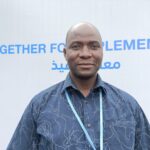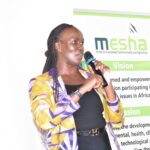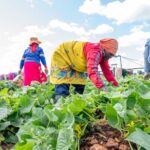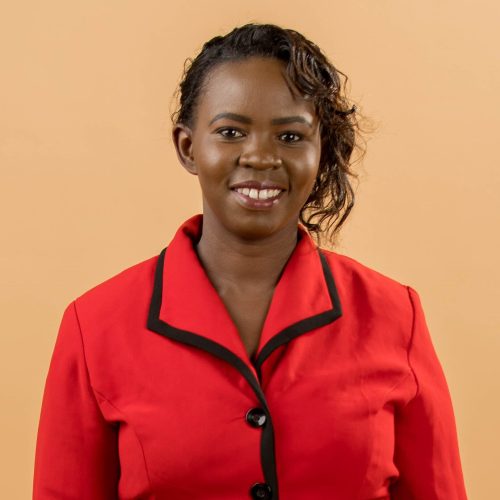By Tebby Otieno tebbyotieno62@gmail.com and Ruth Keah rkeahkadide@gmail.com

A new fish preservation technological intervention is set to assist fisherfolk reduce the possibility of fish spoilage. Set up in Kwale County, the SolCoolDry system, which stands for Solar Cooling and Drying system, is an innovation that consists of a small cold room and an ice-making machine.
Dr Linus Kosambo of the Kenya Industrial Research and Development Institute (KIRDI), said a research assessment revealed a lot of post-harvest fish spoilage was due to poor handling, lack of equipment and a lack of ice to preserve fish. Hence the invention of solar-powered technology that can generate ice for 24 hours.
“The ice is to ensure quality handling of fish from the time it is caught in the deep seas to the time it is brought to the shore to the time it is delivered to the market and even on our tables,” Dr Kosambo said during an exclusive interview.
While the researchers had the option of setting up a cold room for fish storage before sale, they felt it was necessary to provide fish dealers with ice through the SolCoolDry system to transport to their fishing spots. They say the decision was reached after their findings showed that storage was not a major issue in the area due to high demand for fish.
“It is important to supply fish dealers with ice so they can maintain the quality of fish throughout the supply chain. This can also be used in supermarkets,” Dr Kosambo noted.
After observing difficulties during the rainy season, which coincided with high spoilage rate, the researchers came up with the drying component. The system has inbuilt thermal collectors and can dry fish even during the wet season when covered. The system can also be integrated for 24-hour drying.
“Most of fishermen are off-grid as the landing beaches don’t have power supply; therefore, even if they have the technology, they don’t have the power to plug in. We thought we should get 100 per cent off-grid system to help the fishermen do some basic good handling and preservation of fish,” he explained.
Kenya Industrial Research and Development Institute (KIRDI) initiated the SolCoolDry system, in collaboration with AgriF1, Institute of Solar Energy, Kenya Marine and Fisheries Research Institute (KMFRI), and Technical University of Mombasa.
Hussein Hasan, 41, a member of the Mwazaro self-help group and a fisherman, hopes that the innovation will increase his sales by not limiting the number of hours he spends fishing. For example, without access to ice, he stops fishing at 9am so that he can supply fish to retailers before the temperature rise. A challenge, he says, has been solved with the availability of the SolCoolDry system.
“This ice helps me because I come here to buy it when I go fishing. When I catch fish, I put them in ice to keep them from spoiling,” he says.
Neema Abdallah, another member of the group, agrees with him. She says the SolCoolDry system aids her husband, a fisherman, who nearly lost all of the fish he caught one day.
“I recall my husband returning home one day with a total of five large fish, but because they had gone so long without ice, they were all spoilt,” she says.
Neema adds that each fish weighed about 5kg and would have fetched Sh250 in the market had they not gone bad. Instead of throwing them, they found an alternative in drying them first before selling at between Sh100 and Sh150 each. Neema says her husband has become a frequent visitor since the installation of the SolCoolDry system, stopping by to buy ice before heading to the ocean to fish.
‘This ice has aided a lot of fishermen here; we have not heard any complaints about their fish going bad recently. I can say that this project has benefited a lot of fishermen,’ she says.
The SolCoolDry system also looks forward to addressing barriers faced by women eking a living from the ocean including those engaged in seaweed farming. One of such farmer is Mwajumbe Mwabedarusi, who got into seaweed farming as an opportunity to make some money. She later learned of other women practicing the same farming and they formed a group.
While they make a living from seaweed farming, she admits that drying them has been difficult. It was until recently this challenges were reduced in the two months the SolCoolDry system has been in place, thanks to the project’s technological drying site.
“After we harvest the seaweed, we put them in a sack and transport them here to dry. Before, we used to spread mats at homes and dry them. When it rained we would have to remove, else they get destroyed,” says Mwajumbe.
The SolCoolDry system and the drying site are located at the Mwazaro in Kwale county because it is easily accessible to the community and researchers.
Meanwhile, another initiative has been reached in Kwale and Kilifi. Dubbed the, Blue Empowerment project and funded by the International Development Research Centre (IDRC), the system aims to develop an innovative and integrated technological model that will allow women to grow seaweed and rear fish in a controlled set-up along the Indian Ocean shore.
“Right now, it is becoming worse for people in the Coastal region, especially those who depend on natural resources, because climate variability affects them more. They need a solution that can build their capacity to endure them, and that is what we are doing,” says Dr. Joel Onyango from the African Centre for Technology Studies and the project lead for the Blue Empowerment Project.
Blue Empowerment Project aims to address barriers fisher women in the Coastal region face through adaptation of climate-smart Integrated Multi-Trophic Aquaculture technology.









